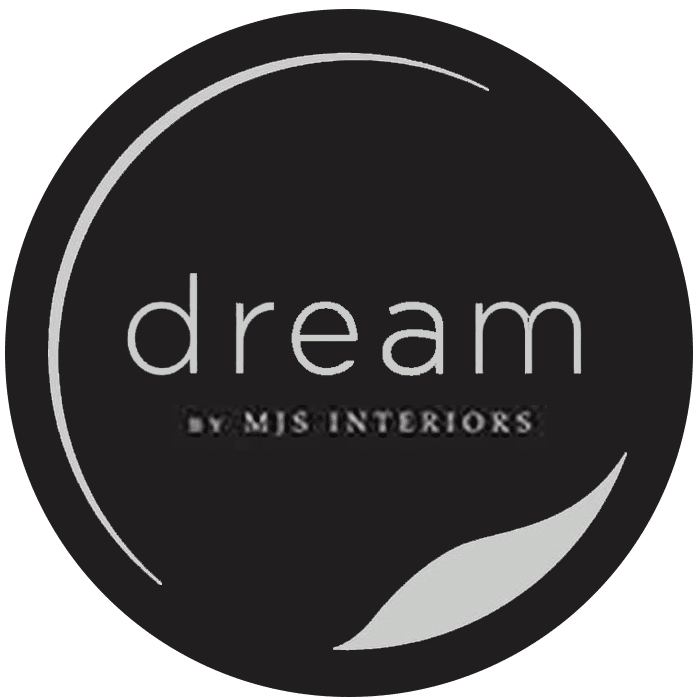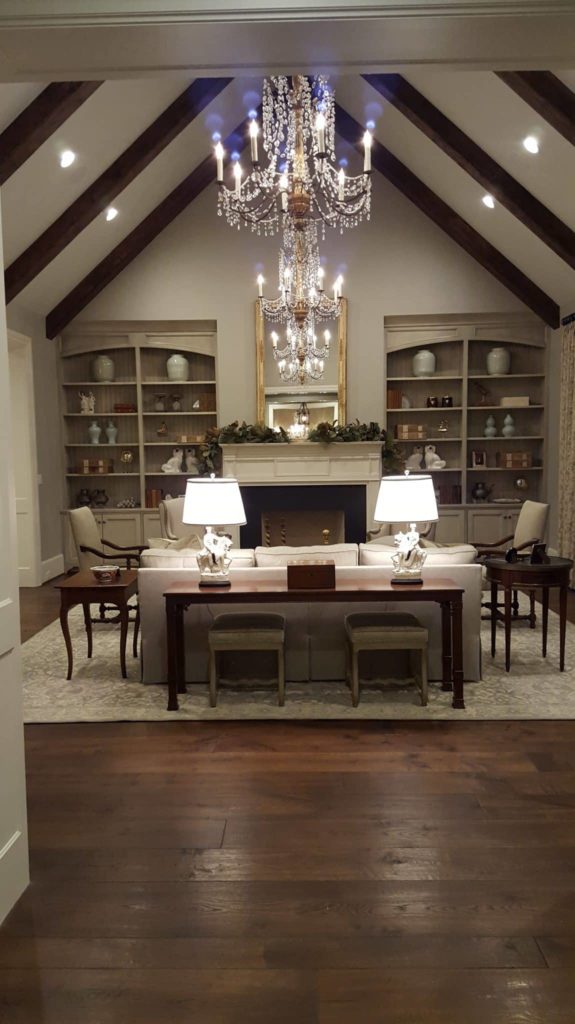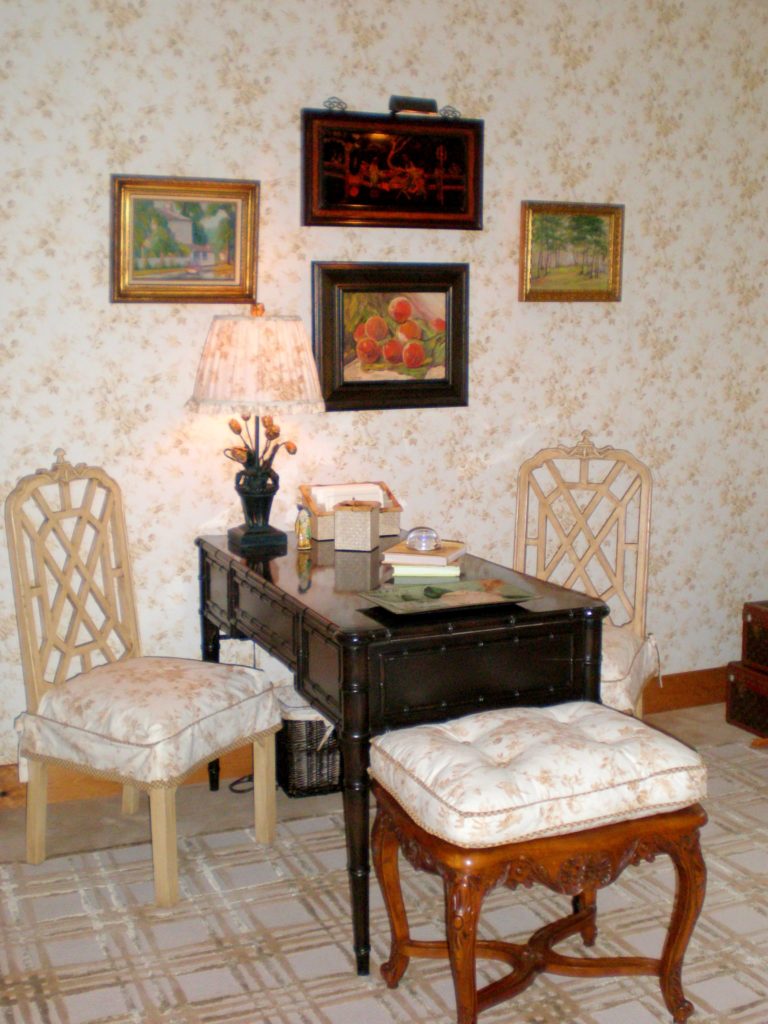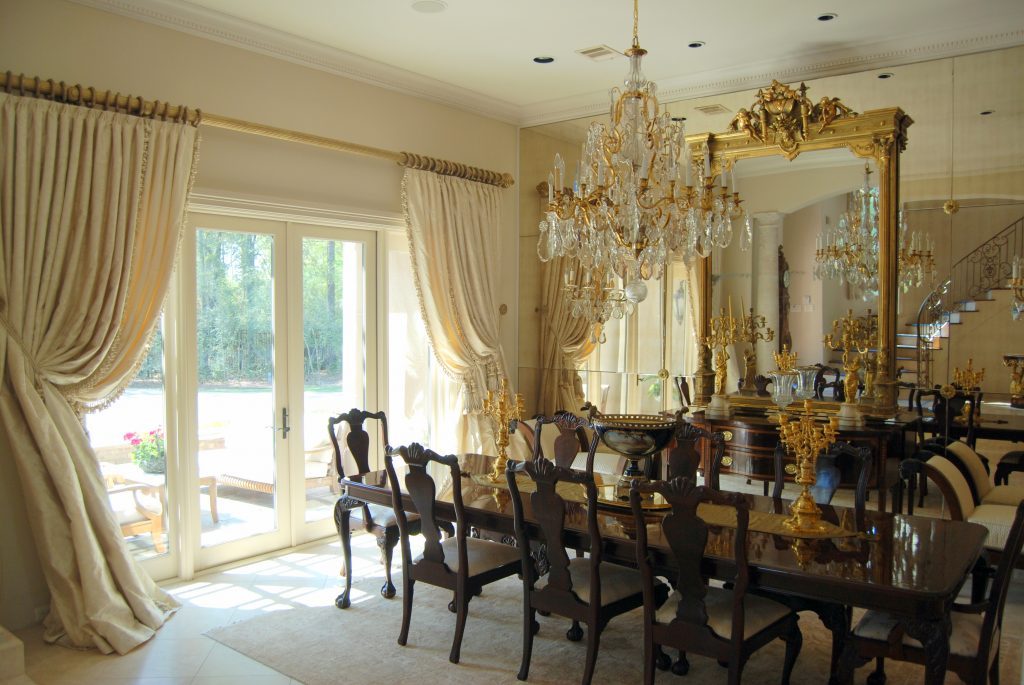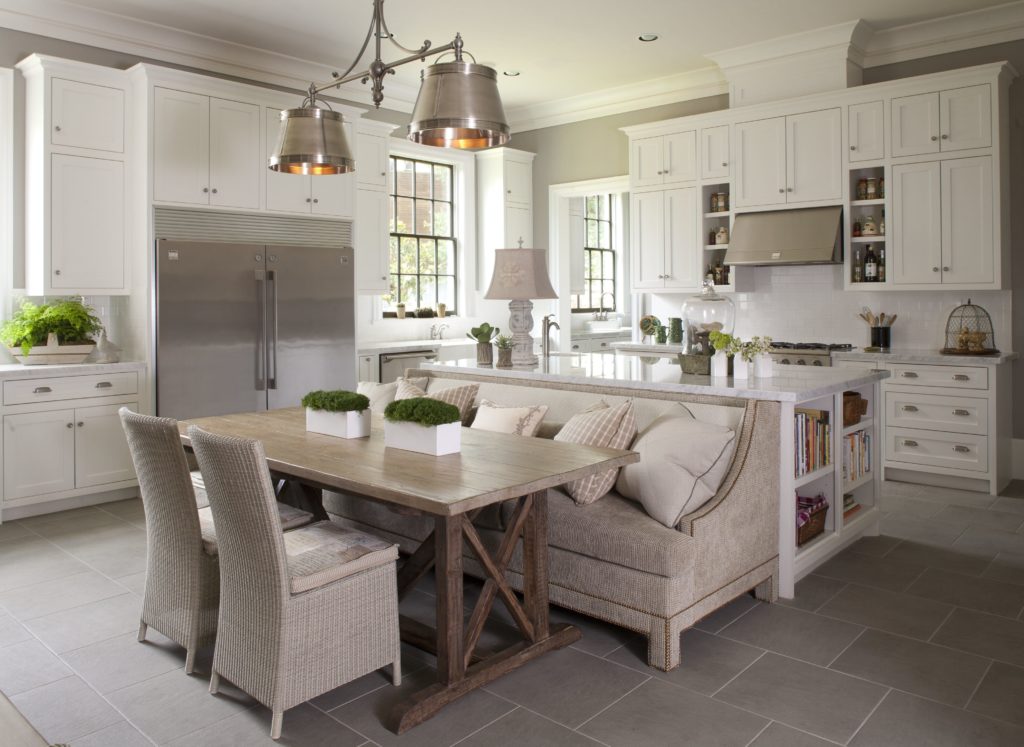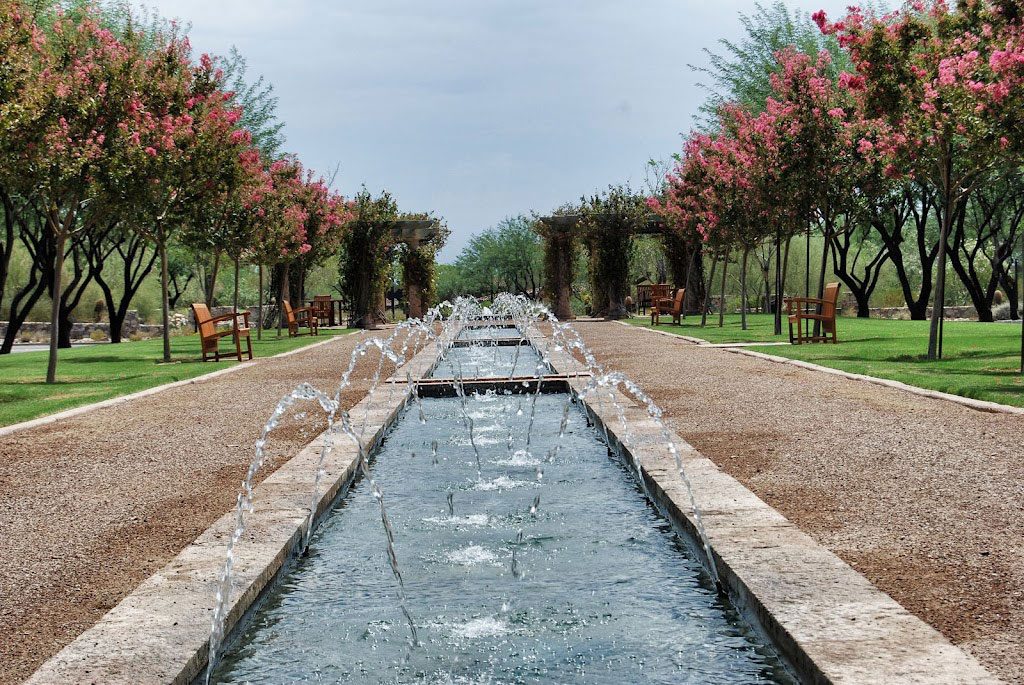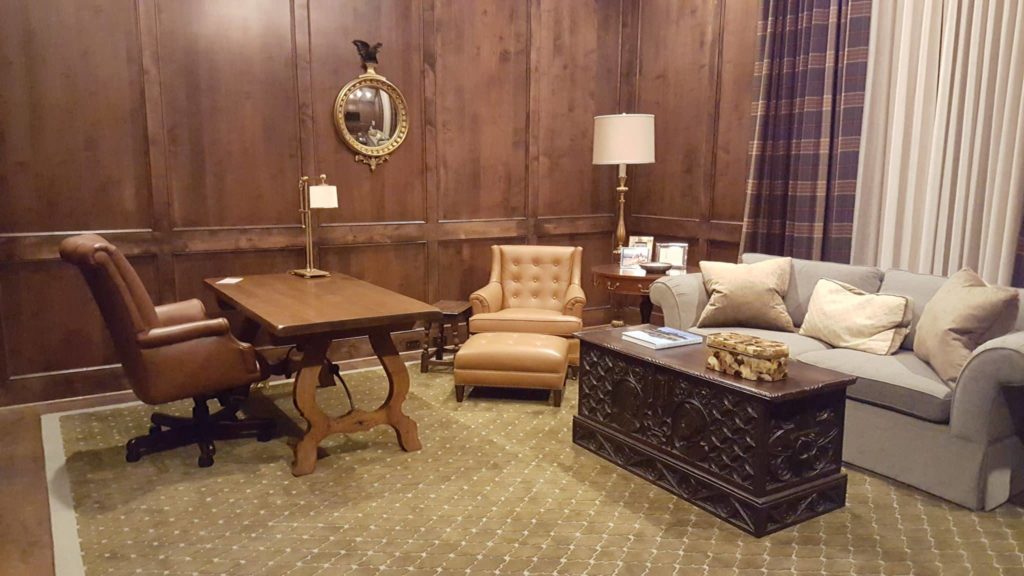Tis the Season for Holiday Design!
When it’s time to decorate for the holidays, check out these quick tips to add some cheer to your home.

- Are you pressed for time, but want a big show to greet guests and carolers on your holiday front porch? Magnolia branches and sprigs of seeded eucalyptus will do just the trick!
- Three trees are better than one! Incorporate multiple trees into your decor, and choose some magnificent Christmas lighting to adorn them with.
- Fresh cedar pine, fir branches, and magnolia leaves combined with fruit, pinecones, and tangerines for an ultra-natural and festive look. Strands of gold beads add a surprising hint of color within your garland.
- A vintage draped blanket over a white table adds the perfect amount of holiday color!
- Enhance your tablescape with varying heights of decorative trees, candle holders, and small decor items.
- Decorate your mental with heavily laden garland full of pine cones, ribbons, mirrored balls, trailing vines, and silver leaves.
- If you pride yourself on having the most festive house on the block, don’t settle on the inside! Your home should be just as festive, cozy, and colorful.
- Grey and gold is a crisp, graphic combination. Why not transform the color combo for the holidays? Santa will be perfectly accentuated in his red suit coming down the chimney into a grey and gold holiday wonderland.
- A coastal holiday look is another excellent way to add a unique twist to your decor. A frosted decor livened with blue tones makes a difference in your living space.
We Work with Your Contractor to Build and Design
Building or remodeling a home is an exciting but challenging undertaking. Often, homeowners seek out a builder without first consulting a designer. This means a designer isn’t brought into the process until many things are already built or in process. At MJS Interiors, we suggest that home design Houston be done as a collaborative effort between designer and builder to create something that fits homeowners’ needs and pocketbooks.
Benefits of a Designer-Builder Relationship
Designer-builder relationships have many benefits. First, this allows the building contractor to focus on what they do best—build. It also creates a process where every part of the build or remodel is thought out and budgeted for from day one. This ensures clients stay within budget and are happy with the end product. Last, an interior designer can work as a project coordinator and communicator to move through the whole process without confusion and without leaving you to make sure everyone is on task.
What Does an Interior Designer Do?
According to the Bureau of Labor Statistics, “Interior designers make interior spaces functional, safe, and beautiful by determining space requirements and selecting decorative items, such as colors, lighting, and materials. They read blueprints and must be aware of building codes and inspection regulations, as well as universal accessibility standards.”
How to Design Your Dream Library
Are you wondering how to design your dream library? Follow these steps for the perfect reading area in your home.
- Consider the context
- Pick a style
- Decide between built-ins and furniture
- Organization
Most rooms in our homes serve a practical purpose for life’s daily routines, but a cozy home library can be a space for those rare moments of peace. Whether your home is traditional, modern, or somewhere in between, bookshelves can be arranged in any way possible!
For a simple but chic look, turn books on their sides and stack them up. Space the stacks on your shelves, leaving air around them for photographs and collectibles. Then, use the piles as risers and top each one with a unique item. Be sure to mix it up! This is where you add all of your pretty things - your objects, sculptures, vessels, collections, and even lighting. Mix up the textures, sizes, styles, and tones!
While layering accessories works well in traditional or eclectic settings, a streamlined approach is fitting for contemporary and modern spaces. Follow the style of your home when accessorizing! Try a mix of vertical and horizontal arrangements. Do this both within the same shelf and then also try mixing up the way entire shelves are arranged so that one shelf is all horizontal and another is entirely vertical.
Depending on the size of your home library room, multiple seating options are available. A popular sofa choice for a traditional home library is the Chesterfield, with its luxurious leather and tufted texture. However, if you are seeking to lighten the look, opt for a lighter textile version such as French linen. Besides a traditional sofa and two club chair configurations, another seating arrangement can be a set of four club chairs, and a round cocktail table ottoman.
Adding glass accents in a dark wood in a traditionally styled library space can help reflect more light in an otherwise dark room, bringing a sense of balance to the area.
Wallcoverings
Whether it’s bold or subtle, the wallcovering is sure to make a style statement. From a dramatic bedroom to a simple living room, there are plenty of ways to incorporate wallcoverings.
- Adding an element of nature is not limited to placing a lovely fig leaf tree in the corner. Floral prints can evoke a colorful spring garden in the living room while a verdant fern pattern gives the home office a sense of calm.
- You can also use it to create a cute nursery!
- Bold, beautiful wallcovering is just fabulous! It creates a theatrical atmosphere for the bathroom.
- Vintage world map wallcovering is another interesting choice.

- When you enter this unique space above you see a mix of materials with an eye for industrial, brass, marble, banana sheet wallpaper, steel and leather combined with velvet armchairs, bistro chairs, and warm lamps make the ambiance of the space intimate, cozy, and exuberant at the same time.
- From natural bronze and blush pinks to splashes of refreshing cool tones, a modern range of marble wall coverings is perfect for incorporating some unashamed luxury into your home.
- Wallcovering makes for a great focal point and infuses a particular layer of pattern, color, and texture into this space.
- It’s so cool to have something special like a hidden, little delight of wallcovering. It sets the scene!
- A fresh color paired with a very traditional pattern means up-to-date! We love contemporary wallcoverings.
Italian House Interior Design
Italian home interior design can be stunning. Check out these great tips on how to achieve this look.
- A modern dining room is a perfect example of modern Italian sophistication.

- The Tuscan design celebrates its pure luxury and at-home feel through this warm kitchen. A low, cover-vaulted brick ceiling, hex terra-cotta flooring, and rustic sage cabinetry in this kitchen deliver natural warmth while comfortably enclosing the space for an intimate feel.
- Travertine, a traditional building material, is primarily symbolic in Italian design, as it was the primary material used in the construction of the Colosseum.
- We love how a space feels both modern, with a luxe mid-century vibe, as well as classical, with details like a magnificent over scale crystal chandelier.
- The style of old-world accessorizing works best when you apply yourself to it entirely.
- Less is more is the motto of contemporary Italian houses, seeking a few essential furniture elements with quality!
- Bathrooms are as important as other rooms in Italian homes and must be as cozy and comfortable as the others. It’s a space to be filled with decoration and imagination.
- Not exactly invented in Italy, the terracotta tradition has historical roots in Tuscany and is typically an Italian one. Although neutrals and white/black remain the favorite color matches in contemporary Italian homes, the Italian decor style is not afraid of using color, even in warm terracotta tone.
Mid-Century Modern Furniture in Houston
The furniture and decor introduced in the 1950s and 1960s were clean, sophisticated, and inclusive. Despite the passage of time, mid-century designs have remained a staple in interior architecture. Mid-century colors tend to combine darker neutral tones with saturated accent colors! Mid-century modern furniture is easily identified by their straight, clean lines accented with smooth, curved angles. They rarely feature any fancy ornamentation or upholstery. This minimalist design commonly relies on wooden construction, but can also include fiberglass or metal. They usually only have one or two colors with no patterns.
Mid-century floor lamps and table lamps feature either very straight, geometric lines or round, curved contour. The very contrasting shapes offer a very bold position for lighting in your room. Mostly made of finished metal, but sometimes with wood legs. A popular mid-century ceiling lamp design sees exposed bulbs on straight rods radiating out of a center, though various options are available. Mid-century modern loved asymmetrical, abstract patterns! Most of today’s furniture is made of engineered pressed wood. Let real wood take center stage via the high-quality furnishings of the ’50s. These mid-century masterpieces have clean lines of teak, walnut, oak, and rosewood.
Less is more! Subtlety and thoughtful craftsmanship are much of what makes midcentury-style timeless. When Eero Saarinen designed his modern classic, marble-topped table in 1956, he wanted to eliminate any extra parts, including extraneous table legs. Paired with molded plastic Eames chairs, the simple lines of the table still look fresh and modern in this slate gray contemporary kitchen. Tapered legs and flared arms reveal a sleek, modern silhouette, while plush seating and a button-tufted back embrace transitional technique. An intriguing contrast is presented by walnut wood legs and a soft, woven textured fabric.
The table reflects the striking elegance of modern Scandinavian design, with its natural solid wood construction with sweeping vertical angles. It is bold and sleek, yet warm and inviting. The elegant and well-proportioned Fulcrum sofa combines luxury and comfort. The sofa is built with a kiln-dried solid wood frame, polished steel sled legs, and hand-tailored top-grain natural leather.
Scandinavian Interior Design
- Wall to wall carpets never took off in Sweden, and all genuinely Scandinavian interiors will have a wooden, preferably light, floor in all rooms apart from the bathrooms.
- White walls and cool grey and blue textiles give off the right ambiance of a Scandinavian interior.
- Who says chairs have to match? Mix and match yours to make your dining space a little more interesting. Another takeaway? Leather furniture is a great way to add a little warmth and texture to a space.
- Architect Arne Jacobsen was possibly one of the most prolific Scandinavian modernist designers of his time. His plywood Ant Chair sold in millions. He was influenced by Mies Van Der Rohe, Le Corbusier, and Charles and Ray Eames, and many of his chairs and lighting designs are still sold today.
- In cold climate countries, it’s not surprising that part of the decor comes in the form of warming textiles like sheepskins, wool or mohair throws, and soft cotton. Not only do they provide a feeling of warmth and coziness, but they also add another layer of texture to a space.
- Scandinavian design uses wood not only in their flooring but also decoratively in furniture such as dining and cocktail tables. There is also a popular trend of bringing in metallic finishes in lighting and accent pieces. Copper and brass pendants and sconces are a way of adding shine to a room.
- A light slate gray is both striking and calming in a sleek kitchen.
International Boutique Hotels
https://www.saint-james-paris.com/experience/
Saint James Paris is clearly one of the boldest, classiest and most characterful hotels in the chic French capital, and the only chateau-hotel in the City of Lights. The décor of this sophisticated family townhouse is a fashionable mélange of timeless elegance, Parisian grandeur, and eccentric details, providing an ambiance that’s both extraordinarily comfortable and out-of-the-ordinary.
The Relais Christine boasts a stylish vaulted spa and a delightful collection of individually designed rooms. The exquisite interior design combines the property’s original architectural features with sumptuous fabrics and lots of characterful period details to create a warm, luxurious, and sophisticated environment.
https://www.dorchestercollection.com/en/paris/hotel-plaza-athenee/
Hotel Plaza Athene, Paris is decorated in a French Regency or Art Deco style, the luxurious rooms are all appointed with antique furnishings. Each room features bespoke linen, Italian marble bathrooms, antique furnishings, beautiful sitting areas, and a pillow menu for uncompromising comfort.
This modern, hip hotel views the ancient monuments of Athens. The 360 Degrees feature neutral colors with industrial-chic design details.
41 is one of the most distinguished and admired hotels in London. The suites are luxurious and share an eye-catching black and white scheme that is homely as well as stylish.
https://www.fazendanova.eu/en/home.html
Fazenda Nova is a secluded luxury Country House in the heart of the Eastern Algarve, near the beautiful historic coastal town of Tavira and stunning coastline and beaches. The bathrooms are polished concrete with Villeroy and Boch bathroom fittings, and Hansgrohe rain showers.
https://www.whythebesthotels.com/en/firenze-hotel-orologio/4-star-hotel-florence.html#home
This elegant and contemporary 4-star hotel has a themed décor inspired by the magical world of Haute Horlogerie. Each floor of the hotel is of luxurious wristwatches. Rooms feature curious details such as door handles in the shape of watch hands and sink taps that look like winding crowns of watches. The suites are elegant with wooden flooring and mahogany furniture upholstered in leather, prestigious fabrics and velvet combined with hi-tech amenities.
Design Favorites: U.S. Boutique Hotels
BOUTIQUE HOTEL INTERIOR DESIGN THAT IS DESTINED TO IMPRESS
Boutique hotels are expanding all over the United States. These are intimate, design-led properties that distinguish themselves from larger, branded hotels by providing guests with ultra-personalized service and accommodation. But more than that, there’s a unique set of characteristics that define a boutique hotel.
CLASSIC CHARACTERISTICS OF BOUTIQUE HOTEL INTERIOR DESIGN
First, this type of lodging facility gains its uniqueness through aesthetics, atmosphere, and a level of personalized service that just can’t be found in larger establishments. Therefore, the size is another important feature of a boutique hotel, and bigger is not necessarily better. The décor plays a key role in adding the right amount of individuality and setting a thoughtful ambiance throughout a boutique hotel. High-quality materials, designer furnishings, and quirky touches are often used to create a memorable visual experience, while bespoke amenities like a generous pillow menu, plush baths, or handmade organic toiletries contribute to an atmosphere of comfort and luxury. Another common characteristic of these exclusive accommodations is the great attention to detail. A true boutique hotel interior design will always take time to choose the finest linens and freshest food ingredients, to style its rooms individually, and to incorporate bespoke art and locally-sourced materials in the interior decoration.
Source: Hotel Emma
We love Hotel Emma! It is so incredibly unique, and a real destination on its own. It’s on the river, located in the old Pearl Brewery. This fabulous spot kept some of the original equipment, details, and industrial elements while incorporating all the luxurious amenities of a world-class hotel. It’s industrial, Texan, rustic, and modern, all at once. It has an old-money feel, a historical background, and a remarkable story.
Source: The Little Nell
Designer Walter Paepcke inspired the modern Aspen experience. The Little Nell is cosmopolitan but intimate, and modern but timeless. The ambiance of this world-famous restaurant flows from the hotel’s living room, as it might in a personal home. A dramatic glass wall displays some of the wines from the spectacular cellar, and within the flow of the room are two smaller, more private spaces. The bass notes of the color palette are warm, calming grays. Layered in are accents of bright color and rich tactile materials.
Source: The Archer Hotel
The Archer Hotel features “industrial chic” interior design and includes butcher-block floors and exposed brick and steel throughout the property, giving the space a tremendous amount of character.
Source: The Ludlow Hotel
Imagine New York of the 1980s with its tremendous art, early hip hop, and punk rock scenes. Then translate that vitality to a boutique hotel in New York’s Lower East Side. Put these together, and you get The Ludlow Hotel. The stunning result appears as soon as you walk through the steel and glass doors of the lobby into a lounge with oak-paneled walls, antique chandeliers, and Parisian accents. All bathrooms boast black and white tile work, marble mosaic floors, brass fixtures, and rain showerheads.
Source: The Spectator Hotel
The Spectator Hotel is smack in the middle of Charleston’s bustling historic district. This Southern charmer brims with the spirit of the Jazz Age, anchored by a Great Gatsby theme, right down to the stuffed albino peacock named Daisy Buchanan in the lobby.
For more information on unique interior design creation, contact Dream by MJS Interiors.
Iconic Vladimir Kagan Furniture
VLADIMIR KAGAN FURNITURE PIECES UNLIKE ANYTHING ELSE
Vladimir Kagan was born in Germany in 1927 and moved to the U.S in 1938. He studied architecture at Columbia University before joining his father, a master cabinetmaker, to apprentice in his woodworking shop and learn the essentials of furniture design from the ground up. Vladimir combined his innovative thinking and technical skills to develop furniture designs, unlike anything imagined before him. Vladimir took inspiration from the new ideology of modern design while resisting geometry in favor of organic forms, which he infused with a signatures Kagan flair. After a prolific career spanning nearly 70 years, Vladimir passed away on April 7th of 2016, at 88 years old.
Source: Todd Merrill Studio
An outstanding custom wing desk rendered in Koa wood and acrylic with patinated brass hardware, its curved form floats on a Lucite base. Giving happiness to its appearance, the other end of the desk rests upon the adjacent cabinet, fitted with drawers and shelves for ample storage.
Source: New York Times
His serpentine sofa, perhaps the best known of all Mr. Kagan’s creations, is an armless, curvilinear swoosh of a thing, often upholstered in velvet.
Source: Vladimir Kagan
We love the modular chaise lounge by Vladimir Kagan. The chaise lounge becomes an intimate love-seat, perfect for conversation. Featuring rounded lines and a cantilevered foot. These elegant and modern designs epitomize Kagan’s organic and sleek iconic furniture.
Source: Contemporist
The Vladimir Kagan/Ralph Pucci collaboration on the making of the fiberglass chair was born out of a simple conversation and viewing of sketches of Kagan’s 1950’s designs in a variety of materials, including fiberglass that was never developed. Vladimir Kagan had always wanted to do a plastic chair, as his designs were so ideally suited for the medium.
Source: Chairish
We love these pair of nesting tables! Especially the curved Lucite bases with Formica laminate tops, and burled maple pattern.
Source: 1st Dibs
Their sensual curves and sculptural beauty define Vladimir Kagan's iconic furniture designs. Early commissions included the Delegate’s Cocktail Lounges for the first United Nations Headquarters in Lake Success, N.Y.
Source: 1st Dibs
We love this sleek modern design of this innovative cubist table, making this piece as relevant and prominent today as it was when first issued. It is constructed of mainly rosewood, chrome, and glass. The versatility of this Vladimir Kagan furniture piece allows for it to be used as a compact glass table, or fully extended to become a dining or conference table.
Source: 1st Dibs
Love this fabulous Vladimir Kagan Cloud Sofa in the original Aqua Suede Upholstery. This sofa is exquisite! From the curved chrome feet to the swooping backrest, this is a perfect statement sofa for any style space!
Source: 1st Dibs
How unique is this roll-top writing desk in oak with Lucite legs and a leather writing surface? The desk features a tambour roll top concealing a red leather writing surface and letter organizer.
Source: Incollect
One of our favorites! This Midcentury Modern coffee table has a unique snail-like walnut base and glass surface designed by Kagan for Selig circa 1950s.
Source: 1st Dibs
Fabulous! Vladimir Kagan “Crescent” swivel lounge chairs. This chair makes for a great 1960s vintage designer piece.
Source: 1st Dibs
Vladimir Kagan was a very innovative and creative thinker! This outstanding Sofa with Lucite legs and floating rosewood side tables demonstrates it all.
Source: 1st Dibs
Vladimir Kagan Lucite armchairs with brass detail. Holly Hunt Great Outdoors aqua velvet.
This classic coffee table is the perfect example of Kagan’s approach to design. It has a sculptural dark walnut base, which gorgeously supports a pristine kidney-shaped glass top.
Source: Vladimir Kagan
Kagan for directional lounge chair! Upholstered in Holly Hunt great plains “Deep in Thought” fabric. Rosewood plinth bases with a return swivel mechanism.
Source: Vladimir Kagan
WOW! Love this fifth avenue angled Kagan sofa.
For more information on how to incorporate stunning pieces such as these and others into your interior design project, contact the Dream by MJS Interiors team!
